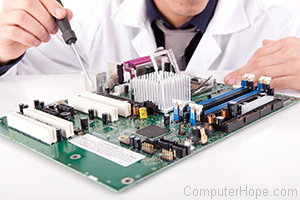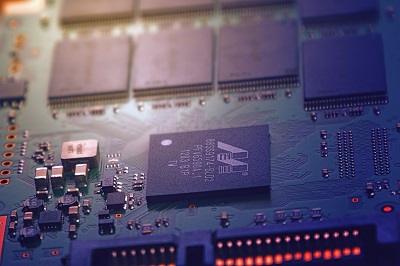Hardware Reverse Engineering: Unveiling the Secrets of Circuit Boards

In a world driven by electronic devices, understanding the intricate workings of circuit boards has become crucial for innovation, repair, and security. Hardware reverse engineering delves into the art of deconstructing these boards to extract valuable information, unveil design secrets, and gain insights into their functionality.

1. What is Hardware Reverse Engineering?

Hardware reverse engineering is a meticulous process of analyzing electronic devices by disassembling them, studying their components, and reconstructing their architecture. It involves deciphering the underlying circuitry, identifying key components, tracing signal paths, and understanding the interactions between different elements on the board.
2. Why is Reverse Engineering Important?
a) Innovation and Design Improvement: Reverse engineering allows engineers to examine existing products, learn from their design choices, and identify areas for improvement. It inspires creativity and leads to innovative solutions that can outperform previous designs.
b) Troubleshooting and Repair: By understanding the circuit board’s functionality, technicians can quickly identify faulty components, trace signal issues, and perform repairs. This knowledge reduces downtime and ensures the device’s longevity.
c) Security and Intellectual Property Protection: Reverse engineering plays a vital role in protecting intellectual property by identifying potential security vulnerabilities and preventing unauthorized copying or cloning of products.
3. Steps Involved in Hardware Reverse Engineering:
a) Disassembly: The process begins with carefully disassembling the device to reveal the circuit board. Proper documentation and labeling of components are crucial to ensure easy reassembly.
b) Component Identification: Each component on the circuit board is identified, categorized, and documented. This involves studying markings, datasheets, and technical specifications to understand their functions.
c) Circuit Tracing: Signal paths are traced to understand the flow of information between different components. This involves using multimeters, oscilloscopes, and other test equipment to measure voltages, signals, and resistance.
d) Functional Analysis: The functionality of each circuit block is analyzed to comprehend its purpose and contribution to the overall device operation.
e) Software Analysis (if applicable): For devices with embedded software, reverse engineering involves extracting the firmware and analyzing the software code to understand its interactions with the hardware.
f) Reassembly and Testing: Once the reverse engineering process is complete, the device is reassembled, and its functionality is tested to ensure that it operates as intended.
4. Challenges in Reverse Engineering:
a) Complexity of Circuit Boards: Modern circuit boards are highly complex, containing numerous components and intricate signal paths, making it challenging to understand their functionality.
b) Lack of Documentation: Original manufacturers often do not provide detailed documentation for their products, making it difficult for reverse engineers to obtain critical information.
c) Intellectual Property Rights: Reverse engineering may raise concerns about intellectual property rights, especially when the aim is to copy or clone a product without authorization.
5. Conclusion:
Hardware reverse engineering is a valuable technique that unveils the inner workings of electronic devices, leading to advancements in innovation, improved repair efficiency, enhanced security, and a deeper understanding of device functionality. It empowers engineers, researchers, and technicians to delve into the intricacies of technology and push the boundaries of electronic design and application.# Hardware Reverse Engineering: Understanding Circuit Boards
Executive Summary
Hardware reverse engineering of circuit boards involves intricate procedures to comprehend and analyze the underlying mechanism, components, and functionality of an electronic device or circuit. The process requires dismantling the intricate architecture of integrated circuit components soldered onto the circuit board. It enables deeper understanding of the device’s operations, vulnerabilities, features, and functionalities to uncover potential improvements, verify compliance with design specifications, troubleshoot complex engineering problems, and rectify potential design flaws or deviations from intended functionalities.
Introduction
A circuit board serves as the foundation for interconnecting electrical components and enabling communication and functionality within electronic devices. Through the reverse engineering process, insights are gained into the architecture, functional aspects, protocols, and performance of the circuit board, shedding light on essential details for efficient design, debugging, and modifications. This article aims to convey an in-depth account of hardware reverse engineering, encompassing its key sub-processes, practical applications, and the intricacies of intellectual property (IP) protection in this domain.
Decoding Circuit Board Structure
Initially, the reverse engineering process involves removing the enclosure of the electronic device in question, thus gaining access to the internal circuit board.
-
Step 1: Disassembling the Device: Prior to commencing the reverse engineering process, the electronic device needs to be carefully disassembled into its component parts, exposing the circuit board within. This necessitates meticulous attention to detail to avoid any irreparable damage during the procedure.
-
Step 2: Captivating Images: High-resolution photos should be taken of the circuit board from diverse angles and perspectives, ensuring that all components and connectors are clearly captured. Photos should also capture identifying marks or labels on the PCB that aid in tracing back to its manufacturer.
-
Step 3: Faultless Documentation: Comprehensive documentation is a pivotal aspect of the reverse engineering process. It involves meticulously documenting each step, drawing schematics, and annotating key observations and measurements obtained throughout the undertaking.
-
Step 4: Unveiling Component Information: Scrutinize each component on the circuit board, noting the manufacturer, part number, and essential technical specifications. This data is invaluable when procuring exact replacements or equivalents during prototyping.
Mapping Interconnections on a Circuit Board
After thoroughly documenting the components and capturing detailed images, the next step involves mapping the interconnections on the circuit board. Various specialized equipment and techniques are employed to facilitate this analysis.
-
Step 5: Circuit Tracing: This is a fundamental process of studying the printed circuit board (PCB) traces, including copper traces and solder masks, to deduce the signal flow and connectivity among components. It also involves analyzing jumper links, vias, and other bridging elements.
-
Step 6: Identifying Signal Properties: Specialized equipment, including logic analyzers or oscilloscopes, might be necessary to measure signal characteristics like frequency, amplitude, and timing intervals. This information is pivotal for understanding data transmission protocols.
-
Step 7: Unraveling Software Protocols: For devices with embedded microcontrollers or integrated firmware, specialized tools and methods are needed to extract and decode software protocols. Analyzing serial data streams and reverse engineering firmware enable insight into the device’s behavior and functionality.
Virtual Schematics and 3D Visualization
To achieve a deeper comprehension of circuit layout and functionality, detailed schematics are commonly developed using specialized software. Furthermore, 3D visualization technology enhances spatial understanding and simplifies the overall design analysis process.
-
Step 8: Schematic Creation: Utilizing powerful schematic capture software, accurate diagrams are produced, mapping the physical layout of components as well as their interconnections. Schematic diagrams serve as a foundational resource for analyzing, troubleshooting, and redesigning circuits.
-
Step 9: 3D PCB Viewer Tools: Employing user-friendly 3D visualization tools enables the circuit board to be minutely examined from any perspective. This visual representation enhances the understanding of PCB layout and the spatial relationships between components, facilitating easier troubleshooting and mitigation of design constraints.
Reconstruction of Original Designs
Empowered with a comprehensive understanding of device components, their interconnections, signals, and protocols, engineers can attempt to reconstruct the original design intent and schematic, fostering advanced analysis and potential modifications, feature enhancements, or security assessments.
-
Step 10: Reversing the Engineering Chain: The goal is to reverse the engineering process utilized in creating the device by tracing its origin, identifying any design updates, and deciphering the initial design rationale.
-
Step 11: Prototype Development: Prototype circuits, mirroring the structure and layout of the original design, are often constructed to validate the accuracy of deduced design specifics. This real-world testing process helps uncover potential flaws or omissions in the reverse engineering process.
Intellectual Property Considerations
It’s imperative to be cognizant of potential IP rights pertaining to the original electronic device. Unauthorized reproductions or distribution without the consent of the rights holder may infringe copyright or patent laws.
- Step 12: Navigating IP Rights: Due diligence must be exercised when reproducing or distributing reverse-engineered designs, ensuring compliance with relevant IP laws. Seeking legal counsel may be prudent to preclude any inadvertent infringement issues.
Conclusion
Hardware reverse engineering unveils secrets within electronic devices’ circuit boards, serving as a pivotal process for exploring device functionalities, identifying potential improvements, and fortifying security measures. This comprehensive procedure begins with disassembling the device, capturing images, and documenting observations. It progresses to mapping interconnections, plumbing signal properties, extracting firmware, and developing virtual schematics coupled with 3D visualizations. The final stages include reconstructing the original design and considering potential IP concerns. Hardware reverse engineering remains a powerful tool for innovation and investigation, fostering our understanding of complex electronic systems.
Keyword Phrase Tags:
- Reverse Engineering
- Circuit Board Analysis
- PCB Interconnections
- Schematic Reconstruction
- Intellectual Property Considerations

Amazing! I always wanted to be able to reverse engineer circuit boards. This gives me a great starting point to learn more.
This is a great tutorial for beginners. However; it misses some important details on how to identify specific components on the board.
I’ve been reverse engineering circuit boards for years. This article provides some good tips, but it’s important to remember that each board is different and may require a different approach.
The author’s approach to reverse engineering is too simplistic. There are more efficient ways to identify components and trace signals.
I’m not sure I agree with the author’s claim that reverse engineering is always the best approach. Sometimes it’s better to just build a new circuit from scratch.
Reverse engineering is like a puzzle. It’s fun to figure out how things work, but it can also be a pain in the butt when you can’t find the missing piece.
I once reverse engineered a circuit board for a toy car. It was so much fun! I learned a lot about electronics and how things work.
Reverse engineering is a valuable skill for any electronics enthusiast. It can help you to understand how circuits work and how to fix them.
I’m not sure why anyone would want to reverse engineer a circuit board. It’s much easier to just buy a new one.
Reverse engineering is a great way to learn about electronics. It’s also a great way to waste your time if you don’t know what you’re doing.
I’ve been trying to reverse engineer a circuit board for weeks. I’m starting to think it’s impossible.
Reverse engineering is like a box of chocolates. You never know what you’re going to get.
I’m not sure I understand the point of reverse engineering. Why not just design your own circuit from scratch?
Reverse engineering is like a game. It’s fun and challenging, but it can also be frustrating when you can’t figure out how something works.